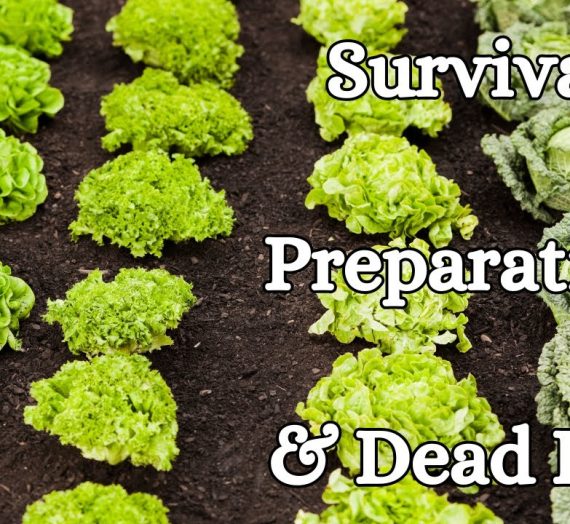How does a person decide where to dig a well? What do chains have to do with pumping water? What is an Amish well bucket? What the heck is water witching, and does it work? Find out on this episode!
Welcome to Writing Rural with Alley, the fiction writer’s inspiration station for rural life and lifestyles, from historical to post-apocalyptic, helping you bring your rural stories to life! I’m Alley, and this is episode (#) (title). Stick around to the end to find out all the ways things could possibly go wrong. Now, let’s get into this.
In Wells Part 1, I covered what a well is, ways to make them, well depth, and potential contaminates. If you didn’t hear it, you can check it out, but after you are done with this one.
If you are wondering why they dug wells and not just live near a river, there are several reasons. One, rivers flood, and historically, they did not have the kind of flood warnings we do now. Second, predators hunt along rivers since many animals come there to get water. It makes sense to build homes where your children will be less likely to become prey, or even your character themself. And third, it might not be as easy to make a home close to the river. With all the water flowing into the river, if there was no modern-day excavation and water drainage, there might be deep ravines around the river. This could mean that if they build a house there, it is on unstable ground. There might not be a good place to grow crops or have livestock of any kind.
Another thing to think about is that river water is not the cleanest. Between fish poop and potential diseases, there are chemicals to worry about in modern times. Groundwater has been filtered through the ground, taking out most impurities before it reaches the well. It cannot always purify modern chemicals, but if the chemicals have not been used close to the ground near the well or are brought to the area by rain runoff, the water is much cleaner than what comes out of a river.
That said, I know of wells that have had floods go over and down into the well, contaminating it. Something to think about.
Some of you might be wondering how people know where to dig to find water.
There were many ways to make an educated guess. In most places, but not all, you will find water if you just dig deep enough. That’s not a huge deal outside of the money aspect in modern times when drilling a well. However, hand-digging 1,000 feet into the ground would take much longer than digging 100 feet. So the real question becomes, what is the best spot that will have the least amount of digging to make a well?
There have been many ways to find this throughout the world. The Romans believed lying on the ground and watching where the dew accumulated and evaporated into the air would be the best spot. They also used a method that dug a short ways down and placed a pot covered in a layer of olive oil upside down in the hole. Then, it was covered with dirt and logs. They checked the next day, and if they found water droplets in the pot, it was believed to be a good place to dig a well.
However, the most well-known method that is used all over the world is called water witching. This was originally done with a y-shaped willow branch that was about the size of a pinky. The Y was held loosely in the palms of a person’s hands. They then walked around, and where water flowed underground, the end of the stick would be pulled down. I have also seen this done with peach branches and even copper wire in two L shapes. They were held close together but closely in opposite hands. When the copper crossed, it was where the water was.
Most people who have never seen this done do not believe it works. I have seen this done! And it works! Not only did it work for where the well should be dug, but I have also seen it used to find water lines and septic lines that people were unsure where they were in a 100-square-foot area and didn’t know where to start digging. I have only seen it not work once, and that was by a drunk guy trying to water witch for the first time, with no idea what he was doing. It didn’t end pretty.
Other ways people found water was by finding large clusters of trees. This meant there was water their roots had gotten down to. They also looked for plants known to need a lot of water. Examples are willow trees, persimmon trees, cattails, and sedges, among others. They sometimes dug them in dry creek beds. Another thing some people did was to let a thirsty horse go and follow it. Horses can smell water from quite a ways off and will instinctively go to it when thirsty.
Now, let’s cover the different ways to draw water.
There is the well-known well bucket made of wood and metal rings to hold them together. However, there have been almost as many types of things used as there are objects that hold water. This includes but is not limited to, buckets made of, or from pottery, ceramic, tin, cast iron (man, that would be heavy), leather, animal bladders, gourds, wood, plastic (for more modern, or post-apocalyptic stories), brass, iron, aluminum, copper, and modern-day galvanized steel. There is also a well bucket designed for a drilled well if no pump is placed in the well. They are commonly referred to as Amish well buckets. They are 3.5 inches in diameter and 52 inches long. This holds roughly two gallons of water and looks like a long tube. Some people make their own out of PVC pipes. I find it is a little trickier getting out such a long object from the well, but it works.
Well buckets are lowered in and brought up on a rope or chain. There are a few things to think about. Some chains could be made of lead or could rust. Ropes could carry bacteria or germs. Also, ropes can rot or even be cut. This could unintentionally lead to buckets being lost in the well. Rotting wood or metals leaching into the water can lead to diseases.
In modern times, there are electric pumps that can be run with the same electricity you use for your home. It can also be run on solar power. I have even seen windmills used to charge batteries to run electric pumps.
For other wells, some people use hand pumps. AKA, a piston pump. These use suction. They are sometimes used with a hand pump; other times, farmers use a windmill to draw the water for their livestock. They can pump between 2 and 20 gallons per minute. The lower number for hand pumps and higher for strong winds with a windmill. Many modern off-the-grid homes also use these for pumping water to above-ground storage tanks.
Chain pumps, also called Norias, work like a water wheel, drawing the water up the chain. Both are common in Amish and Mennonite communities and on many off-the-grid homesteads. I do know the chain is not favored in my area for more than home cisterns. If the chain breaks, it can cause problems in hand-dug deep wells. Cisterns under the home are rarely more than 20 feet deep, at least here in Tornado Alley. Cisterns are basically water storage that is found under the home. They most often collect rainwater, but I have known a few that used it to store well water, and they carried it in every morning by the bucket full.
Speaking of hauling water, it can be pulled up all year round. The reason is that the water is most often found below the freeze line, meaning it doesn’t freeze. The average temperature of well water is between 35 to 77 Fahrenheit (1 to 25 Celsius). That means the well doesn’t freeze in winter and is a nice cool drink in summertime.
Fun fact: The most widely used joke for anyone who has lived to go from well water to running water in the homes is when I was young, we only had running water if we held a bucket and ran with it.
What could possibly go wrong:
Likely to go wrong: Your character’s chain pump breaks and falls into the well. This could potentially contaminate the well.
Likely to go wrong: Your character’s pump needs to have parts replaced. This requires pulling it out of the well.
Possible to go wrong: Your character has to draw water out of the well by hand and carry it uphill a long way. This is tiring but a great workout.
Possible to go wrong: Your character asks a water witcher to tell them where to dig a well, then decides they don’t believe them and digs somewhere else. They might be digging a lot longer than they had to.
Unlikely to go wrong: Your character forgets to stop the pump on a windmill, and it pumps the water until the well is dry.
Unlikely to go wrong: Your character is getting water with a bucket in the winter, and it is so cold the rope or chain freezes after it was in the water of the well. This makes it impossible for them to pull the bucket up.
Improbable but technically still in the realm of possibilities: Your character uses a cast iron cauldron to get water. The cauldron and water combined are so heavy they lose their balance and fall into the well. They could hit their head or break a bone on the cast iron. Even if they have no injuries, there might not be anyone around and no way to get help out of the well. This could be deadly.
Improbable but technically still in the realm of possibilities: Your character uses water witching to find water, and the town folk accuse them of witchcraft.
Helpful Links to learn more:
Wells:
https://www.tmnews.com/story/lifestyle/2014/07/15/water-buckets-were-importa/47935659/
http://www.larsdatter.com/buckets.htm
https://agwt.org/content/wells-buckets-rope-belong-history-books




